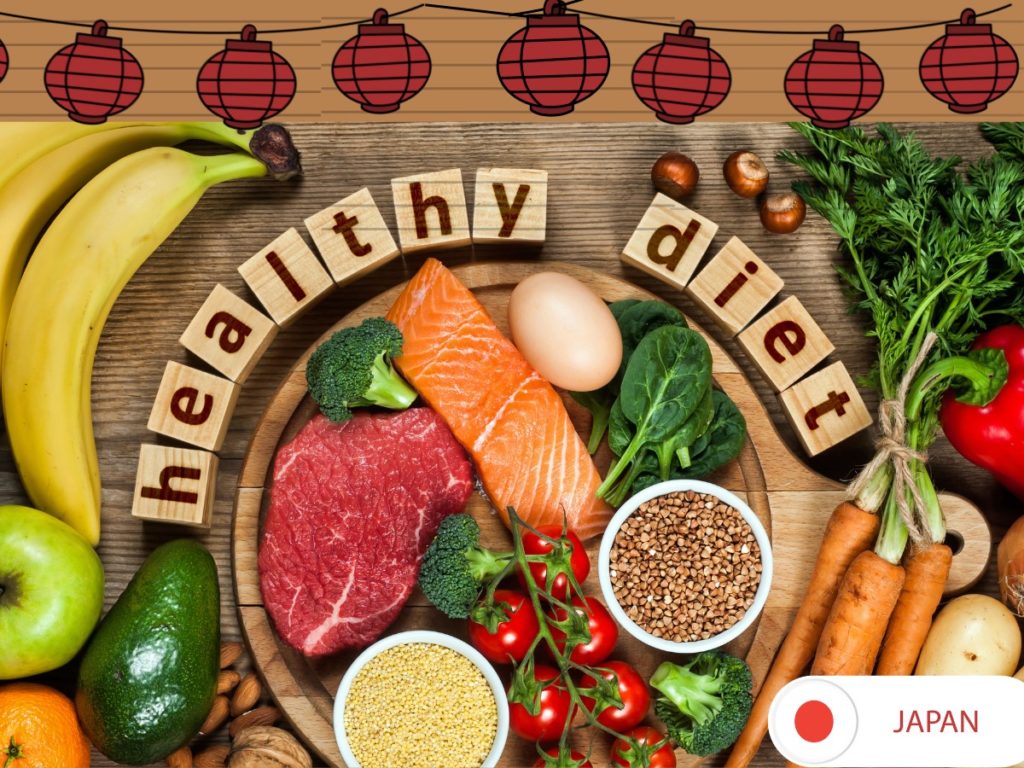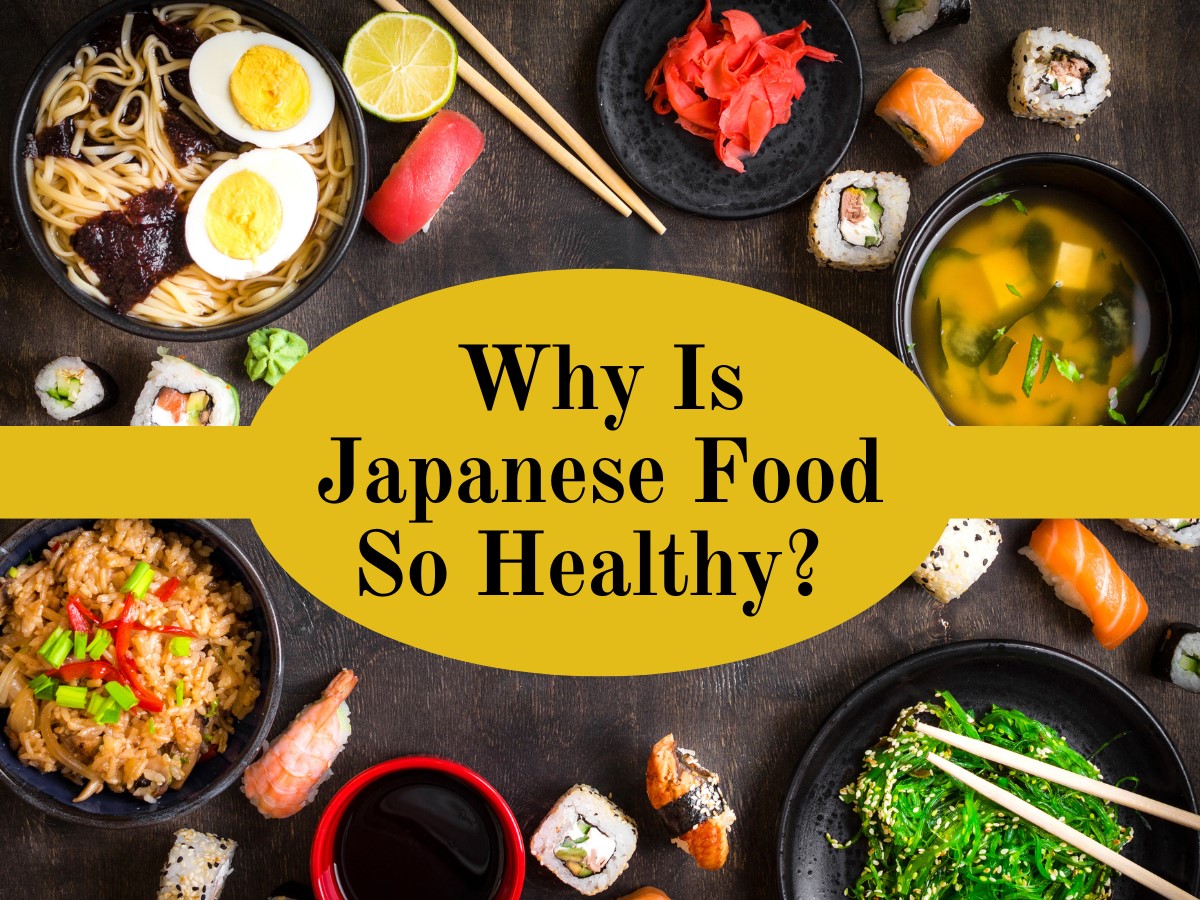Do you use healthy ingredients in your kitchen? Is your cooking method calorie-free? Are you concerned about how much you eat? Japanese people take these aspects into account to maintain a healthy and fit lifestyle. It is why their foods are so nourishing yet delectable simultaneously.
Nevertheless, there are many secrets of the wholesome Japanese diet that not only protect them from several maladies but also delays their aging and prolongs a healthy lifespan. Here we are revealing the mystery of “Why Is Japanese Food So Healthy.” You can follow their diet for a hearty life.
The Japanese Diet
Japanese diet contains a significant portion of proteins and omega-3 fatty acids from fish, seafood, and plant-based products such as tofu, natto, and seaweed. They balance this nutritional component with carbohydrates and little fats for a balanced diet. Typically, Japonica short-grain rice provides most of the carbs; other significant sources are starchy vegetables and noodles.
Usually, the Japanese use raw seafood and fish in their meals rather than deep-frying them in much oil. Some unique cooking methods use minimal oil to stir-fry or cook beef, lamb, pork, and tempura. Moreover, fermented foods provide a rich source of vitamins and minerals. Japanese minimize salt and spices by employing various condiments, herbs, and sauces in their meals.
Traditional Japanese diets, such as the Okinawa diet, emphasized seafood for protein and healthy fats and sweet potatoes for carbohydrates. However, the modern Japanese diet, which has taken several influences from the West and China, comprises animal proteins and several processed condiments.
Components of the Japanese Diet
Soup:
Japanese diet comprises many types of soup; miso soup is the most famous. This delectable and nourishing soup contains miso, seaweed, seafood, soybean, and vegetables. Moreover, many people add noodles to the soup to make it more filling.
Side Dishes:
Japanese side dishes include vegetables and fruits that are either sauteed, boiled, steamed, stir-fried, grilled, or pickled.
Main Course Meal:
Japanese main course meals usually contain poultry, beef, lamb, pork, seafood, and fish with either rice or noodles seasoned with herbs and condiments.
Staple Food:
Japanese staple food revolves around rice and noodles, particularly ramen, soba, and udon noodles. Moreover, Japanese noodles are not unhealthy; they are made of healthy whole-grain flour such as wheat (udon) and buckwheat (soba).

The Key Ingredients in Japanese Foods and Their Health Benefits
Japanese foods contain a high proportion of proteins, omega-3 fatty acids, good cholesterol, vitamins, and minerals such as calcium, magnesium, and potassium. Moreover, there is a limited portion of carbohydrates and sodium, which is why the incidence of cardiac diseases in Japan is the least.
Fish and Seafood
Famous kinds of fish in Japanese meals are tuna, salmon, mackerel, and pacific saury. Moreover, seafood varieties include uni (sea urchin), shrimp, unagi (eel), scallops, squid, and octopus. These foods contain omega-3 fatty acids, vitamin D, vitamin B2, calcium, magnesium, potassium, phosphorus, iron, iodine, and zinc.
Omega-3 fatty acids such as EPA and DHA are highly beneficial for the vitality of the heart and brain health. They prevent cardiac and cerebral issues like heart attack and stroke. Moreover, omega-3 fatty acids are excellent for reducing inflammation and depression and improving temporary memory problems (dementia).
Plant-based Products (Fruits, Vegetables, Tofu, Natto, and Seaweed)
Popular Japanese fruits include persimmon, mandarin, fig, kiwi, sudachi, yuzu, kumquat, peach, plum, grapes, melon, pear, and apple. These fruits are rich in antioxidants to help fight against free radicals and vitamins C, A, B, and E, required for the normal functioning of the human body. Japanese consume these fruits as snacks, for breakfast, as side dishes, and for desserts which they consume much less.
Japanese side dishes and main course meals comprise a lot of nutritious vegetables like onions, scallions, daikon radishes, carrots, sweet potatoes, and sweet corn. Moreover, they prepare these veggies by either boiling, steaming, grilling, pickling, or stir-frying using minimal oil. These plant-based foods are rich in vitamins and minerals and provide a good source of carbohydrates and dietary fiber. This insoluble fiber is a superfood for gut health. It is a lubricant to soften stool and prevent constipation, the mother of diseases.
Tofu, the soybean curd, is a rich protein and dietary fiber source. It is a gluten-free and low-calorie food excellent for colonic health (colon- part of the digestive system). It also prevents the risk of colonic cancers and IBS/IBD (inflammatory bowel syndrome/disease).
Another soybean product, natto, is the result of the fermentation of soybeans and is packed with proteins and probiotics. Furthermore, seaweed is quite popular in Japanese meals; it is rich in dietary fiber, vitamins, and minerals, particularly iodine. Seaweed is a fantastic food for normal thyroid functioning.
Animal Proteins (Beef, Lamb, Pork, and Poultry)
Beef, lamb, pork, and poultry are rich sources of proteins; one should still prefer poultry and fish to red meat. Red meat is high in cholesterol and can increase the risk of heart attacks, coronary artery diseases, and strokes. It is why the Japanese prefer fish, seafood, and plant-based proteins over animal ones. In short, you can take red meat with caution (limited portion and often).
Good Fats and Unsaturated Vegetable Oils
Japanese use good fats and unsaturated oils for cooking. About 81% of Japanese use olive oil and sesame oil due to the plethora of health benefits. These oils are rich in omega-3 and omega-6 fatty acids. They prevent heart diseases and diabetes, regulate cholesterol levels, and assist in losing body weight.
Japonica rice and Japanese Noodles
Japanese rice and noodles make up a significant portion of their carbohydrate intake. They use white short-grain rice for dishes such as donburi, sushi, Tai-meshi, battera, and tokaraisu. However, Japanese noodles such as udon and soba are made of wheat and buckwheat, containing all essential nutrients.
Japanese Fermented Food
Japanese prefer fermented foods as condiments over spices and salt to keep them healthy and fit. These include natto, miso, shoyu, umeboshi, katsuobushi, and tsukemono. Moreover, these fermented foods are rich in proteins, vitamins, minerals, and antioxidants.
Green Teas
Popular Japanese green teas are matcha, sencha, genmaicha, bancha, gyokuro, tencha, and hojicha. These antioxidants help fight free radicals, prevent aging, and prolong a healthy lifespan.
FAQs
What Type of Foods Do Japanese Take In Moderation?
Japanese limit the use of dairy products, red meat, eggs, bakery goods, and sugary foods to keep them healthy since these foods contain a high proportion of simple carbs and sugars.
Why Is the Japanese Diet So Healthy?
Japanese diet mainly relies on plants and seafood for proteins, good fats, vitamins, and minerals. Moreover, they take a limited portion of carbohydrates, spices, and salt. Such a diet prevents them from getting harmful diseases, delays aging, and prolongs their healthy lifespan.
Can You Lose Weight on a Japanese Diet?
Yes, you can lose weight on a Japanese diet because the meals are rich in proteins, dietary fiber, vitamins, and minerals. Moreover, Japanese foods have a small portion of carbohydrates and fats.
The Secrets of Why Do Japanese Live Longer?
- Japanese foods are healthy since they are packed with all the essential nutrients the human body requires for normal functioning.
- Japanese eat slowly to help digest food quickly and get the nutrients to absorb maximally.
- Japanese prefer green teas and herbal drinks enriched in antioxidants over carbonated beverages.
- They control the portion size of their meals and eat several times a day.
- Japanese never skip breakfast, and their breakfast is highly nourishing.
- They eat much fewer desserts compared to other countries.
- Japanese foods are healthy because of their cooking methods, e.g., boiling, steaming, grilling, broiling, stir-frying, and fermenting.
- They eat rice and noodles instead of bread made of refined flour.
- Japanese fermented foods are rich in soy proteins, which regulate hormonal balance and promote a healthy lifestyle.

